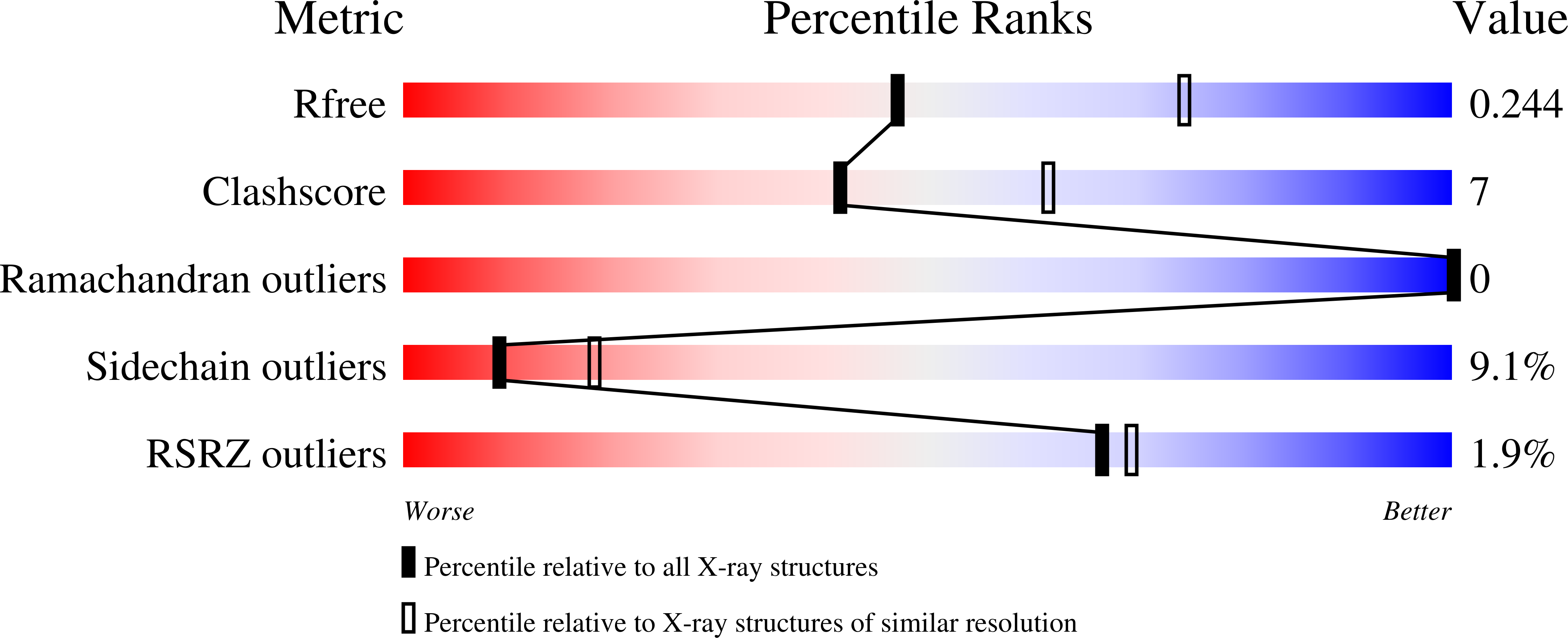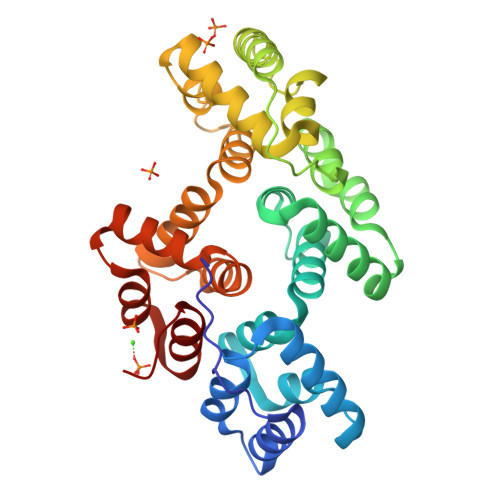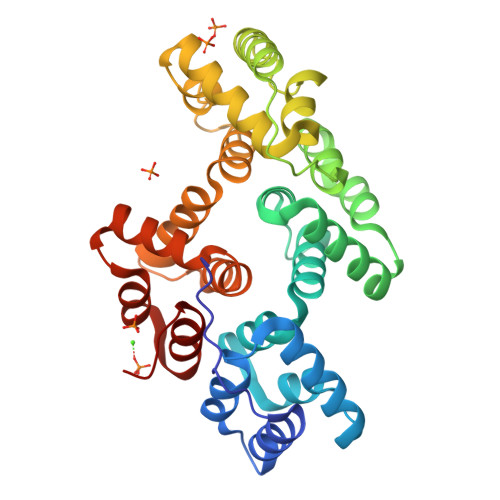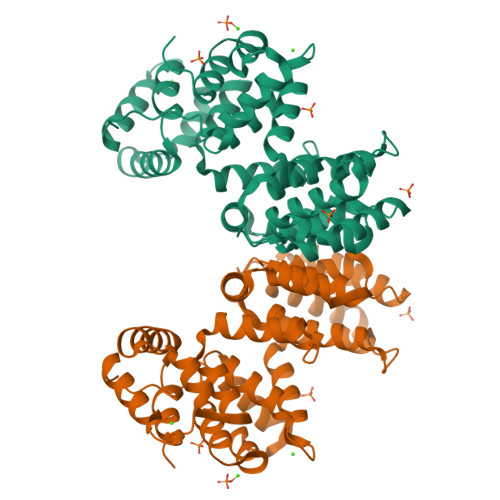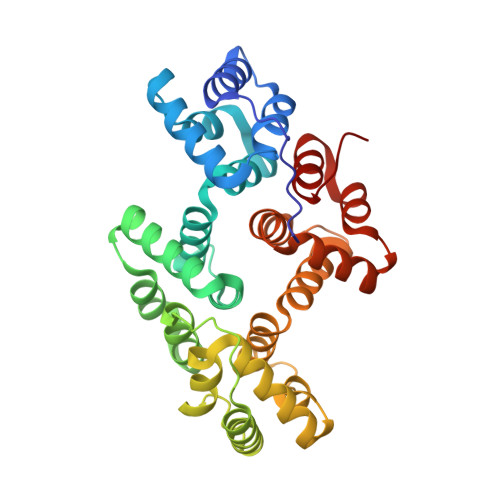The crystal structure of calcium-bound annexin Gh1 from Gossypium hirsutum and its implications for membrane binding mechanisms of plant annexins.
Hu, N.-J., Yusof, A.M., Winter, A., Osman, A., Reeve, A.K., Hofmann, A.(2008) J Biological Chem 283: 18314-18322
- PubMed: 18441010
- DOI: https://doi.org/10.1074/jbc.M801051200
- Primary Citation of Related Structures:
3BRX - PubMed Abstract:
Plant annexins show distinct differences in comparison with their animal orthologues. In particular, the endonexin sequence, which is responsible for coordination of calcium ions in type II binding sites, is only partially conserved in plant annexins. The crystal structure of calcium-bound cotton annexin Gh1 was solved at 2.5 A resolution and shows three metal ions coordinated in the first and fourth repeat in types II and III binding sites. Although the protein has no detectable affinity for calcium in solution, in the presence of phospholipid vesicles, we determined a stoichiometry of four calcium ions per protein molecule using isothermal titration calorimetry. Further analysis of the crystal structure showed that binding of a fourth calcium ion is structurally possible in the DE loop of the first repeat. Data from this study are in agreement with the canonical membrane binding of annexins, which is facilitated by the convex surface associating with the phospholipid bilayer by a calcium bridging mechanism. In annexin Gh1, this membrane-binding state is characterized by four calcium bridges in the I/IV module of the protein and by direct interactions of several surface-exposed basic and hydrophobic residues with the phospholipid membrane. Analysis of the protein fold stability revealed that the presence of calcium lowers the thermal stability of plant annexins. Furthermore, an additional unfolding step was detected at lower temperatures, which can be explained by the anchoring of the N-terminal domain to the C-terminal core by two conserved hydrogen bonds.
Organizational Affiliation:
Institute of Structural and Molecular Biology, School of Biological Sciences, University of Edinburgh, Edinburgh, Scotland, UK.







